Shae and I had visited Washington D.C. a number of times before our recent 12 day stay there as part of our 50 state road trip, but despite all those visits we’d never gone inside the Washington Monument.
We’d seen it from the outside each time we’d visited; after all, it’s pretty hard to miss! This time though we decided to get the full experience, so we booked tickets to go up inside the monument.
We’ll share more in the next day or two about the different ways you can get tickets – including when it seems completely sold out – but for now here are 14 fun facts about the Washington Monument that we learned while we were there.
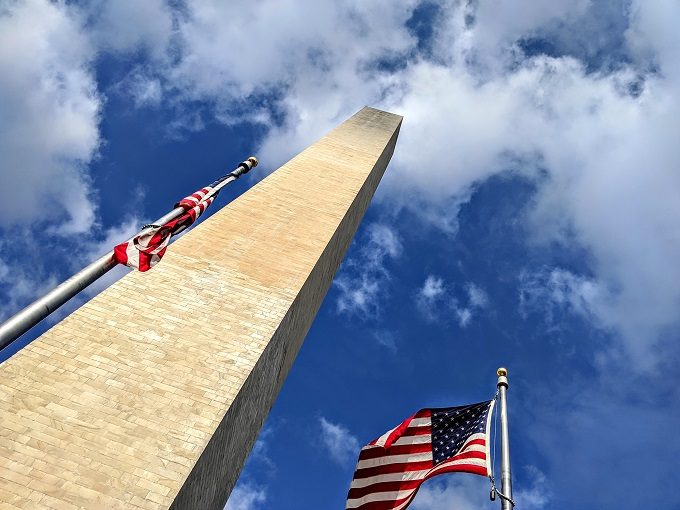
1) It’s 555 ft 5 1/8″ Tall
At 555 ft 5 1/8″ tall, it’s the tallest structure in Washington D.C. That height is based on the measurement by the National Park Service; the National Geodetic Survey measured it a few years ago and gave its height as 554 ft 7 11/32″.
2) It Was The World’s Tallest Structure
In 1884, the Washington Monument overtook Cologne Cathedral in Germany as the world’s tallest structure. It held that record for five years before being overtaken by the Eiffel Tower which is 1,063 ft tall.

3) It Is (Or Was) The World’s Tallest Stone Structure
Although it’s no longer the world’s tallest building, it is the tallest stone structure. The Washington Monument was an impressive feat of engineering as mortar wasn’t used to hold the stones together during construction – they relied solely on friction and gravity.
Well, it’s sort of the world’s tallest stone structure. The next point suggests it might not necessarily be able to claim that now.
4) It Was Damaged By An Earthquake
On August 23, 2011, Virginia was rocked by a 5.8 magnitude earthquake. Its epicenter was in Louisa County; Shae and I were living in Portsmouth VA at the time and I remember working at home and feeling the earth moving.
Due to its proximity to Washington D.C., the earthquake had an impact there. The monument was one of the buildings impacted and over 150 cracks were found, resulting in it being closed for repairs until May 12, 2014.
One of the ways that the National Park Service repaired the structure was by using some metal plates and pins. As a result, the Washington Monument is no longer exclusively constructed using stone.
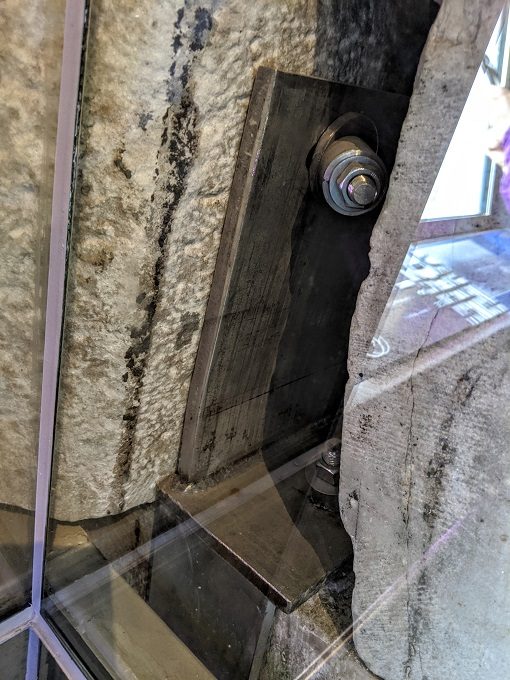
5) It Was Reopened Again In 2019
The earthquake isn’t the only time the monument has been closed. From August 2016 to September 2019, it was closed in order to repair the elevator system and to enhance security.
We subsequently got lucky for a couple of reasons. First, we visited Washington D.C. in November 2019 which meant it was open again in time for our visit. Secondly, a friend mentioned that the day after our visit they had problems with the elevator again. The next fact makes me glad we weren’t stuck at the top.
6) It Has 896 Steps
The Washington Monument has had some kind of working elevator for much of its life. Before it officially opened though, more than 10,000 people climbed what was then more than 900 steps to get to the top.
I’m glad we don’t have to climb up 896 steps nowadays, although it might still have been worth the effort due to the stunning views you get of Washington D.C. There are windows overlooking the nation’s capital to the north, south, east and west, taking in sights like the Lincoln Memorial, White House, Jefferson Memorial and more.
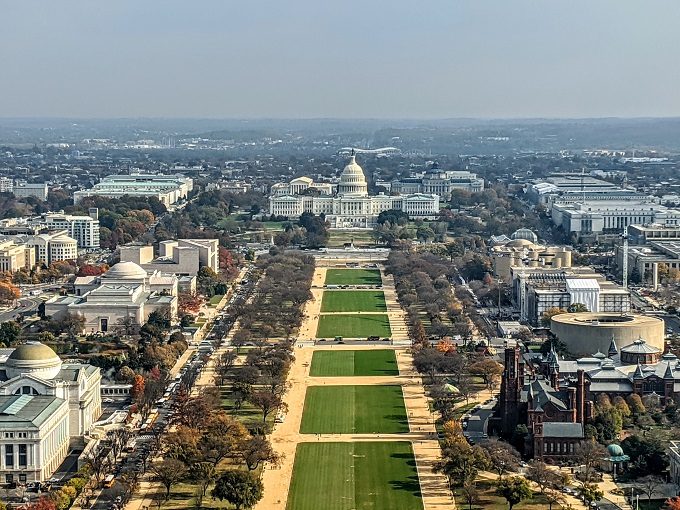
7) Construction Of The Monument Stopped For 25 Years
Construction of the Washington Monument began in 1848 and continued until 1854. It was being funded by private citizens and was only 152 ft tall when funding dried up. The Civil War subsequently delayed construction even further, with some photos taken at the time showing what it looked like.
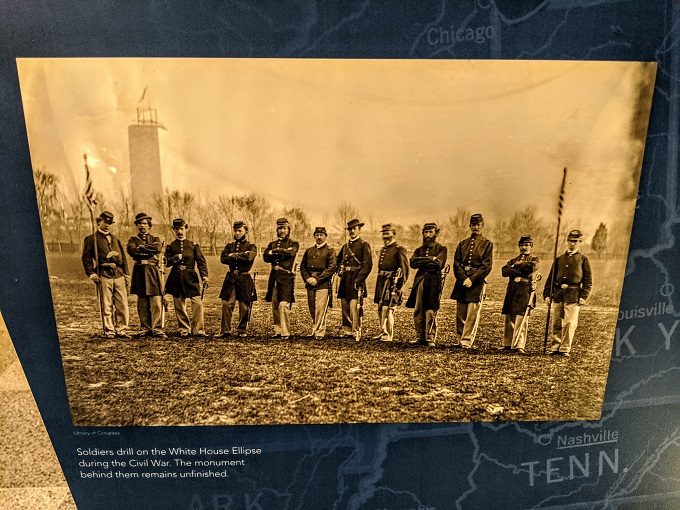
The monument remained a stump for 25 years, before construction resumed in 1879. One problem they encountered was that the rest of the Washington Monument was built using marble from a different quarry to the first 152 ft. As a result, there’s a noticeable difference in coloring at that mark.
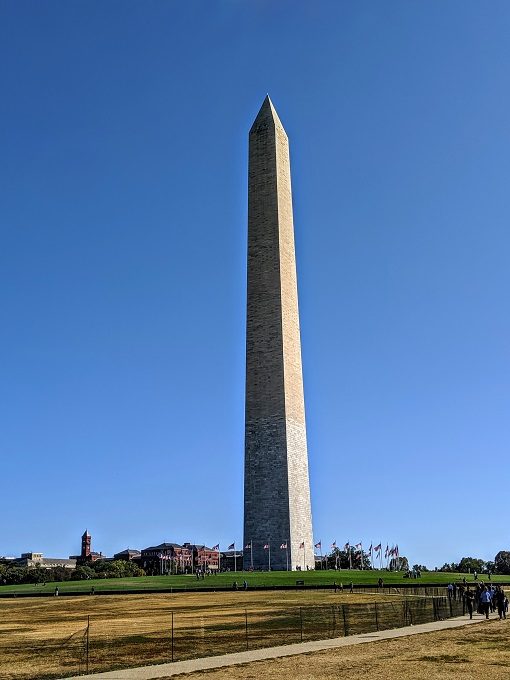
8) There Are 36,000 Stones
I mentioned earlier that the Washington Monument was constructed without mortar holding it together and only recently had some metal pins inserted to repair some earthquake damage. The rest of the monument is constructed with 36,000 stones.
9) The Monument Has Stones From Around The World
Although most of the Washington Monument’s 36,000 stones came from nearby quarries, 193 of them came from further afield. Cities and states in the US and even foreign countries provided stones to be used in its construction, with those stones lining the stairwell.
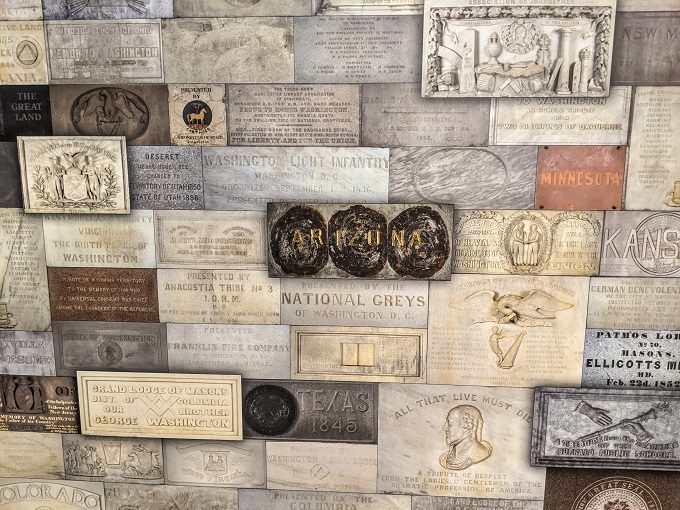
One of the great things about our tour of the Washington Monument is that even though we took the elevator, we didn’t miss out on seeing some of these stones. While descending in the elevator, the frosted doors become clear and you can see some of the stones provided by different US states and cities.
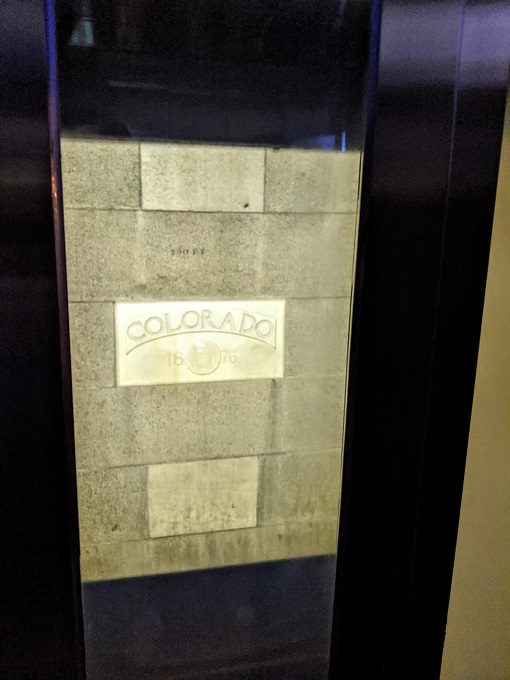
10) Its Walls Are Covered By Glass
You can’t tell from a distance, but the walls of the monument are covered by glass to protect the stone.
11) It Has An Aluminum Tip
Back when the Washington Monument was being constructed, aluminum was a rare metal. Engineers decided to place an aluminum tip atop the monument because the metal wouldn’t tarnish or discolor the stones. At the time, this apex was the largest piece of aluminum in the world.
This aluminum apex had inscriptions on all four sides, although some of those are no longer legible:
- North – Joint Commission at setting of capstone. Chester A. Arthur. W. W. Corcoran, Chairman. M. E. Bell. Edward Clark. John Newton. Act of August 2, 1876.
- South – Chief Engineer and Architect, Thos. Lincoln Casey, Colonel, Corps of Engineers. Assistants: George W. Davis, Captain, 14th Infantry. Bernard R. Green, Civil Engineer. Master Mechanic, P. H. McLaughlin.
- East – Laus Deo. Repaired 1934, National Park Service, Department of the Interior. (Laus Deo means “Praise Be To God” in Latin, while the inscription about the repair was added in 1934).
- West – Corner Stone laid on bed of foundation, July 4, 1848. First stone at height of 152 feet laid August 7, 1880. Capstone set December 6, 1884.
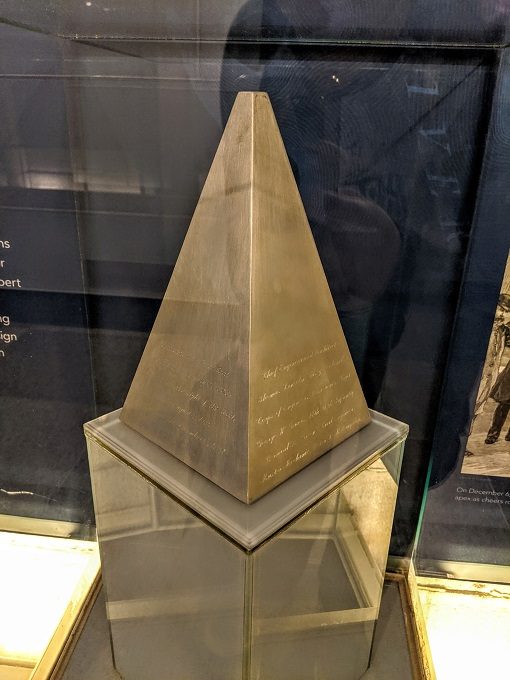
12) The Aluminum Tip Has Multiple Lightning Rods
In 1885, the Washington Monument suffered from its first lightning strike which cracked one of the stones. The aluminum tip subsequently lost almost half an inch of its height due to being vaporized by lightning strikes.
To help protect the monument, lightning protection systems were installed and have been replaced as necessary over time. An old set of the lightning rods is now on display at the top of the monument – you can see how lightning strikes burned and bent the metal over the years.
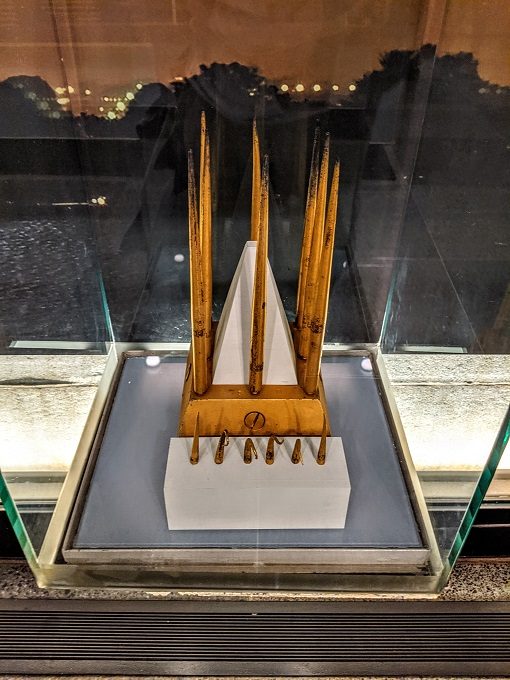
13) The Monument Was Originally Going To Be An Equestrian Statue
The Washington Monument is one of Washington D.C.’s most iconic structures, but did you know the original plan was for it to be an equestrian statue? Its obelisk design came about following an 1836 design competition which was won by architect Robert Mills. His design included a colonnaded building circling the obelisk, but budgetary concerns meant that only the obelisk was constructed.
14) 50 Flags Circle The Monument
Although the Washington Monument doesn’t have a colonnaded building circling it, it is circled by 50 American flags. These flags used to be removed each night and stored, but they’ve flown 24 hours a day since July 4, 1971.
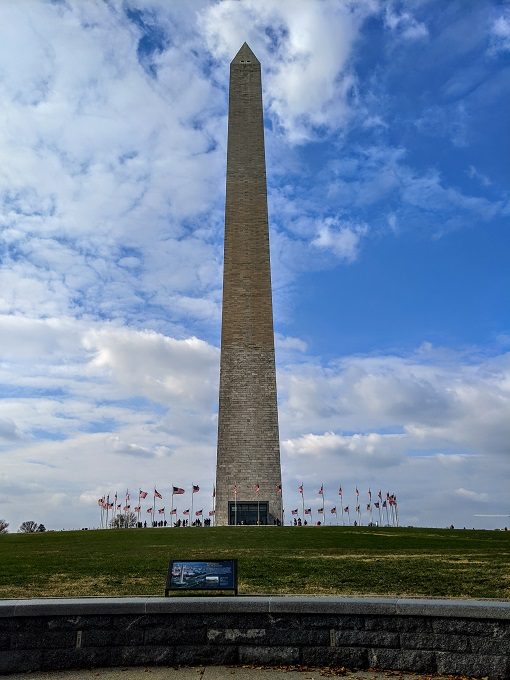
Other Facts?
Those are 14 fun fact about the Washington Monument we recently learned during our visit to Washington D.C., but do you know any others? Let us know in the comments below.
Robert Mills, the architect for the Washington Monument, was a native of Charleston, SC and became the first official architect for South Carolina public buildings. In the first state of your tour, I enjoyed helping you visit Historic Columbia sites, where one of the houses you toured was one of the few homes designed by Mills. Designed for a fellow member of Columbia’s First Presbyterian Church, it was constructed in 1823 and is now called the Robert Mills House, Before going to Washington, Mills designed, among other public buildings, 18 county courthouses in South Carolina, including the Williamsburg County Courthouse in my hometown of Kingstree. It is still in use.
Ah, that’s where he’s from. I saw the name Robert Mills at the monument and recognized it for some reason, but couldn’t remember why – thanks for reminding me!
CNN obtained it’s prominence for breaking news (it was little watched beforehand) by it’s coverage of https://www.rollcall.com/news/policy/the-view-from-1982-the-washington-monument-standoff
An obelisk was thought by early Egyptian culture to be a frozen sunray from the gods